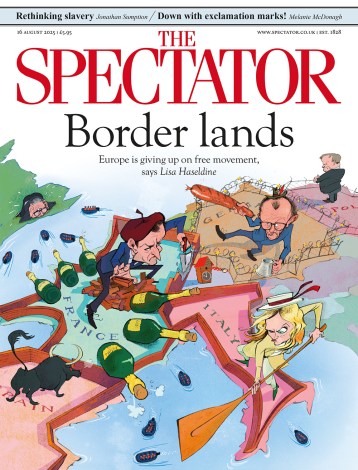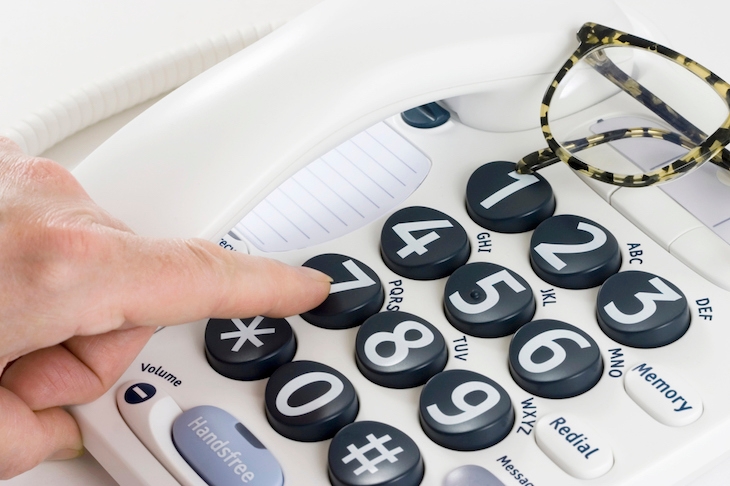About 30 years ago, BT introduced a telephone handset with enormous keys. It was intended for people with serious visual impairment. Unexpectedly, it became their bestselling phone.
There is a reason for this. The millions of people who wear spectacles or contact lenses typically remove them at night, making the normal tiny keys impossible to read on a bedside phone.
Things designed specifically for people with disabilities often end up being valuable to many more people than originally planned. Most of us are effectively disabled some of the time. Wheelchair ramps at airports and stations are not only useful if you are in a wheelchair, they are also useful for wheeling heavy luggage. Likewise, it isn’t only the blind who find it handy that shampoo bottles open at the top and conditioner bottles at the bottom; I have fairly good eyesight normally, but in a shower I can’t read a bloody thing.
Hotel showers are a user-experience nightmare: by the time you’ve scalded yourself playing Russian roulette with the inscrutable designer taps, you then have to squint at six-point type to discover which of the three poncey bottles might contain the shampoo.
Generally, it is a good principle to design for people — all people — under the assumption that they do not have full use of their faculties or complete freedom of movement at the point of use.
Modern architectural standards often mandate that doors in new buildings are fitted with door handles rather than knobs. This stipulation is intended for people who are severely arthritic or who have lost the use of their hands. If, like me, you are the kind of curmudgeon prone to grumbling about this kind of legislation, it is worth remembering that whenever you are carrying a couple of mugs of tea, you too have effectively lost the use of your hands. You can easily operate a door handle with your elbow; you can’t do that with a doorknob.
Perhaps the strangest success–story to emerge from something originally conceived for a tiny subgroup of disabled people is the labra-doodle. This was first bred to order by the Royal Guide Dog Association of Australia for a blind woman whose husband was allergic to dog hair, and was intended to combine the temperament of a labrador — perfect for a guide dog — with the non-shedding coat of the poodle.
People then noticed that an obedient, intelligent dog which did not shed hair was a perfect dog no matter the state of your eyesight or allergies. (Wally Conron, the labradoodle’s original breeder, says he now regrets having unintentionally started the worldwide craze for ‘Frankenstein’ dogs.)
One of the worst aspects of many online services is that they are designed to work only under perfect conditions. Apps are typically designed by young people with perfect eyesight seated in front of a very high-quality screen on a high-speed internet connection. It’s a different matter when you are trying to use an app while stuck on a crowded train with patchy mobile coverage.
The proliferation of touchscreen interfaces in cars seems particularly insane to me. Traditional knobs, dials and switches have the great advantage that, with a little familiarity, you can use them while keeping your eyes on the road. A lorry driver was recently jailed for ten years for crashing into the rear of a car while preoccupied by the playlist on his mobile phone. Yet it isn’t clear to me why fiddling with a phone is all that different from navigating through the convoluted controls of an in-built sat-nav screen — which is still legal. Short of installing Angry Birds on the flight-deck of a 747, I can’t think of anything more dangerous.
Another feature of bad design is what I call the ‘motorway service station decision tree’. This happens when you turn off the motorway at an unfamiliar service station to be met with a rapid barrage of signs saying ‘caravans’, ‘lorry park’, ‘hotel’, ‘fuel’, ‘café’ and so forth, all pointing somewhat ambiguously in different directions. Someone has designed an irreversible decision tree on the assumption that no one ever makes a mistake. One misjudged turn and you end up in the lorry park, with no remaining option to get to the café other than driving the wrong way down a one-way road or giving up and returning to the motorway.
Airports all work this way. Heaven forbid that you get muddled up about your gate number, because once you discover that the flight from gate 43 is not going to Helsinki after all, you will find no screens anywhere within 500 yards of gate 43 which tell you about flights other than those from gates 41-49.
Again, the signage is designed only to aid people who haven’t made a mistake — who are presumably the people who need that information the least. It’s rather like those signs which read ‘You are now nearing the end of the escalator: please face forwards’, which are only visible if you are facing forwards already.
My grouse with most online commerce is similar. When it works well it is magnificent, but too little thought is paid to contingencies for when things go wrong. I recently ordered something from John Lewis, whose service is mostly flawless. Three days after the promised date, my Dyson fan had still not arrived at my chosen Waitrose. You would think some algorithm might have noticed this missing item, and prompted someone to contact me with a quick ‘sorry’ to explain what they were doing. Instead, the burden fell entirely on me to ring them, find out what had happened and request a refund. Generally I revere John Lewis, but this time I felt myself thinking, ‘You lost the sodding fan — how is this my problem?’
For companies, the internet has been a great labour-saving device — largely because they seem to be busily engaged in outsourcing a lot of their work to their own customers. This is woefully short-sighted. If every tenth transaction results in a logistical nightmare, people will stop buying online altogether.







Comments